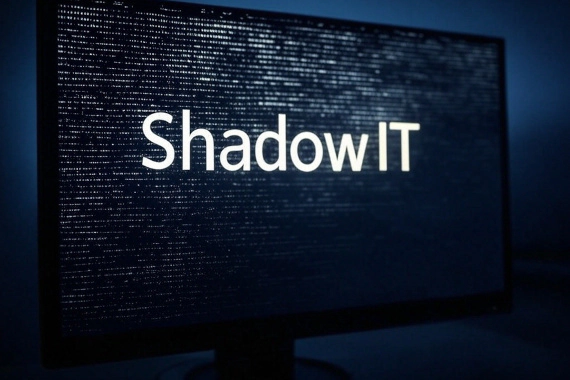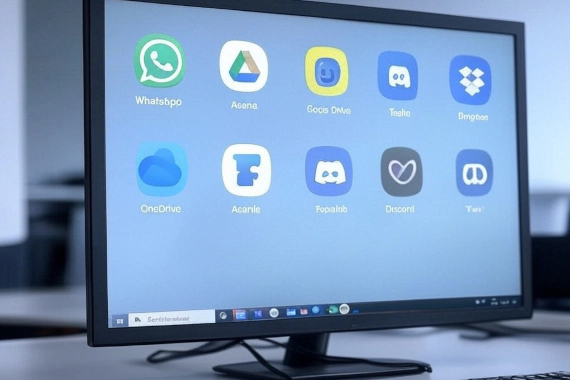FACT: The likelihood of a cybercrime being detected and prosecuted in the U.S. is a mere 0.05%, according to the World Economic Forum.
Furthermore, a staggering 67% of data breaches are reported by third parties or even the attackers themselves rather than being discovered by the companies’ own security teams.
Clearly, there is a significant gap in many organizations’ ability to detect and respond to threats proactively.
Leveraging threat intelligence enables organizations to proactively mitigate risks before they’re exploited.
In this post, we’ll cover what threat intelligence is, the types of intelligence data found on the dark web, how to find that data and more.
What is threat intelligence?
Threat intelligence, also known as cyber threat intelligence (CTI), is information that organizations use to understand the threats they face, allowing them to prepare for and prevent cyberattacks. It involves collecting and analyzing data about current or potential threats to an organization’s assets.
Threat intelligence is sourced from multiple places, including open-source intelligence (OSINT), proprietary databases, government agencies, and the dark web. CTI is contextualized data that helps security teams make informed decisions by better understanding the attacker, their motivation, and capabilities. Threat intelligence also includes Indicators of Compromise (IoC), which are pieces of forensic evidence that identify malicious activity.
Threat intelligence enables security teams to be proactive in preventing data breaches.
Types of threat intelligence on the dark web
There is a large range of malicious information available on the dark web. Some common types of threat intelligence found include:
- Stolen Data: This includes customer and employee credentials, personal information, credit card details, and other sensitive data that is often obtained via data breaches.
- Malware and Exploits: Many dark web marketplaces focus on buying and selling various types of malware, including ransomware, trojans, and exploits that can be used to target software vulnerabilities.
- Hacking Tools and Services: The dark web offers various hacking tools and services, such as initial access as a service, botnets for hire, phishing toolkits, and services for exploiting vulnerabilities.
- Cybercrime Forums: These criminal forums provide a platform for threat actors to share and sell data, discuss tactics, and collaborate on attacks.
- Insider Threats: Information about insider threats, such as employees selling access to corporate networks or sensitive information, can also be found on the dark web.
- Threat Actor Profiles: Information about known threat actors, including their tactics, techniques, and procedures (TTPs), can help security teams prevent attacks.
- Zero-Day Vulnerabilities: Information about vulnerabilities that are not yet known to the public or the vendor (zero-day vulnerabilities) can be found on the dark web, often being sold or exploited by attackers before they are publicly disclosed.
How do you gather threat intelligence on the dark web
The safest way to gather threat intel from the dark web is via a monitoring service from a vendor who focuses on this. Breachsense is a dark web monitoring solution that enables your organization to leverage threat intelligence without the need for specialized staff.
The other option is to do this manually. The dark web isn’t indexed by search engines like the clear web. As a result, it’s a bit more challenging to find useful data. Note, the dark web can be dangerous without the proper OpSec. If you prefer the manual approach then here are some steps to help guide you.
- Accessing the Dark Web: The dark web is accessed using special software, such as the Tor browser, which allows users to browse .onion websites anonymously. It’s important to ensure that your own security and anonymity are protected via a VPN when accessing these sites.
- Setting Up a Secure Environment: Use a virtual machine or a dedicated computer for dark web activity or research to isolate your activities from your main network and systems. This helps prevent infections on one device from spreading.
- Identifying Relevant Sources: The dark web is huge, so it’s crucial to identify the relevant forums, marketplaces, and websites for your threat intelligence needs. This may require some initial exploration and networking to find the right sources.
- Monitoring and Collecting Data: Where possible, use web scraping tools and automated scripts to monitor and collect data from identified sources. Note that some forums and threat actor sites will block automated requests, so in these cases, a manual approach is required.
- Analyzing the Data: Analyze the collected data to identify patterns, trends, and specific threats. This can involve using tools for natural language processing, data mining, and other analytical techniques.
- Correlating with Other Sources: Cross-reference the information gathered from the dark web with other sources of threat intelligence, such as open-source intelligence (OSINT), industry reports, and threat feeds, to validate and enrich your findings.
- Maintaining Operational Security: Throughout the process, maintain operational security (OpSec) to protect your identity and activities. This includes using pseudonyms, always using a VPN, and being cautious about the information you share.
What types of data are found on the dark web?
While there are legitimate uses of the dark web, like protecting the privacy of activists, journalists, and individuals living under oppressive regimes, there is also a large amount of questionable data. Some examples are:
- Hacked Data: Stolen personal information, including usernames, passwords, financial records, and social security numbers, is often traded on the dark web.
- Leaked Information: The dark web can contain confidential or sensitive information, such as corporate secrets, government documents, or celebrity scandals.
- Illicit Marketplaces: These marketplaces sell illegal goods such as drugs, firearms, stolen credit card information, and counterfeit currencies.
- Malware and Exploits: Darkweb marketplaces are a hub for trading malware, ransomware, and exploits that can be used for cyber attacks.
- Forums and Chat Rooms: Numerous forums and chat rooms exist where folks can share breached data, discuss techniques, and plan attacks
- Cryptocurrency Services: Services related to cryptocurrencies, such as money laundering or mixing, are available on the dark web.
- Counterfeit Goods: Fake documents, such as passports, driver’s licenses, and diplomas, as well as counterfeit branded products, can be purchased on the dark web.
- Illegal Services: Services like hacking, hitmen, and other illicit activities can be found, although some may be scams.
RECOMMENDED READING: How to find data breaches
Choosing the best tool is highly dependent on your specific needs. Having said that here are some factors to consider:
- Scope of Monitoring: Ensure that the tool covers a wide range of sources on the dark web, including dark web forums, marketplaces, chat rooms, and other relevant platforms where sensitive data might be exposed.
- Real-Time Alerts: Choose a tool that provides real-time alerts when your sensitive data is detected on the dark web. This allows you to respond quickly to potential threats.
- Customization: Look for a tool that allows you to customize the monitoring parameters, such as specific keywords, data types, or date ranges.
- Ease of Use: The tool should have an easy-to-use API and provide clear, actionable insights. It should also be easy to set up and manage without requiring extensive technical expertise.
- Integration: Check if the tool can integrate with your existing security stack, such as SIEM (Security Information and Event Management) or incident response platforms, for a streamlined security workflow.
- Privacy and Security: Ensure that the tool itself is secure and respects your privacy. It should not expose your sensitive data during the monitoring process.
- Support and Training: Consider the level of customer support and training provided by the vendor. Good support can help you effectively utilize the tool and respond to incidents.
- Cost: Evaluate the pricing structure of the tool and ensure it fits within your budget. Consider the return on investment in terms of the potential cost savings from preventing a data breach or identity theft.
Automate your dark web threat intelligence
Having access to actionable threat intelligence is essential for your organization’s security.
By leveraging the intel from the dark web, you can identify and mitigate criminal activity before malicious actors exploit the data.
When integrated correctly, threat intelligence can be a powerful addition to your security toolset.
However, without the right tools or team in place, dark web threat intelligence can be challenging to manage and not provide the desired results.
Breachsense is a comprehensive API-driven dark web monitoring platform that provides continuous monitoring, real-time alerts, and actionable insights.
By automating the collection and analysis of dark web intelligence, Breachsense enables your team to stay one step ahead of cybercriminals, reducing the risk of data breaches and identity theft.
Need visibility into your leaked data on the dark web? Book a demo to see how Breachsense can help.



